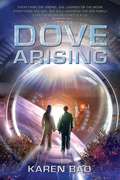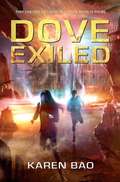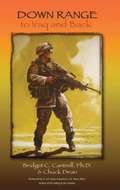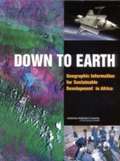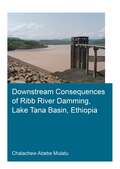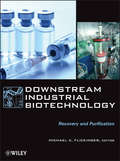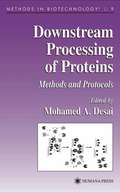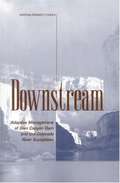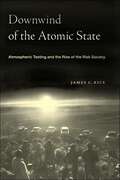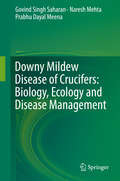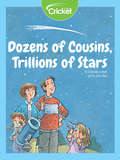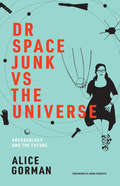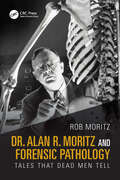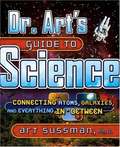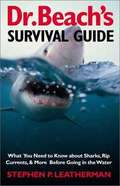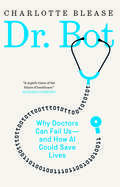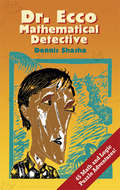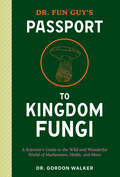- Table View
- List View
Dove Arising
by Karen BaoPhaet Theta has lived her whole life in a colony on the Moon. She's barely spoken since her father died in an accident nine years ago. She cultivates the plants in Greenhouse 22, lets her best friend talk for her, and stays off the government's radar. <p><p> Then her mother is arrested. <p> The only way to save her younger siblings from the degrading Shelter is by enlisting in the Militia, the faceless army that polices the Lunar bases and protects them from attacks by desperate Earth-dwellers. Training is brutal, but it's where Phaet forms an uneasy but meaningful alliance with the preternaturally accomplished Wes, a fellow outsider. <p> Rank high, save her siblings, free her mom: that's the plan. Until Phaet's logically ordered world begins to crumble...Suspenseful, intelligent, and hauntingly prescient, Dove Arising stands on the shoulders of our greatest tales of the future to tell a story that is all too relevant today.
Dove Exiled
by Karen BaoPhaet Theta is a fugitive. Hiding in plain sight with her friend Wes's family on the drowned planet Earth, Phaet discovers the rugged beauty of the world her ancestors once called home. All her life, she's been taught to fear the "Earthbound," and their generosity and kindness surprise and touch Phaet. But when the Lunar Bases attack Wes's isolated village, Phaet's past catches up with her, and she's forced to choose: stay on Earth and fight beside the boy she's falling for, or stow away on a Moon-bound ship so she can save her brother and sister from the government that killed their mother. This thrilling sequel to Dove Arising plunges readers deeper into this complex and haunting world where freedom comes at a chilling price.From the Hardcover edition.
Doves, Diplomats, and Diabetes: A Darwinian Interpretation of Type 2 Diabetes and Related Disorders
by Milind WatveDarwinian medicine looks at the ecological and evolutionary roots of disease. A disease is an interaction between a genome and its biotic or abiotic environment and therefore a disease is essentially an ecological process. Good understanding of ecology and a Darwinian way of thinking can give us novel and useful perspectives on health and disease. If we understand the disease process better, we can certainly prevent, control as well as treat diseases in a better way. Although the thought that the origins of obesity and type 2 diabetes (T2D) might lie in our hunter gatherer adaptations is not new, research over the last decade makes us rethink many of the classical concepts. Brain and behavior is increasingly being recognized as central to all the endocrine, metabolic and immunological changes that earmark type 2 diabetes and other metabolic syndrome disorders. A major change in paradigm appears to be on the horizon and the proposed book intends to speed up the paradigm shift by raising important questions, pointing out flaws and inadequacies in the prevalent paradigm and stimulating radical rethinking which would redirect and refine the line of research as well as bring some fundamental changes in drug discovery and clinical practice.
Down Range: To Iraq and Back
by Bridget C. Cantrell Chuck Dean<p>As soldiers, we have spent countless years learning to survive the actual battle. Endless days on the firing range; countless hours in battle drills; months in combat learning the "ropes"; physical fitness training every day...all of these were dedicated to ensuring your survival and victory at the moment of truth. Now, it is time to dedicate some time to surviving when it is over. <p>PTSD is sometimes called "The gift that keeps on giving." If you die, that is not contagious--but if you live, and come out of the experience with a load of mental baggage, then your loved ones will most likely share in your struggles as well. <p>Reading this book ahead of time can be a form of inoculation, giving you insight that will help keep your combat reactions in perspective, and help you understand what is happening to your mind and body after wartime experiences. Just as we can equip ourselves to physically survive combat, we can also prepare to mentally survive the aftermath. This book is yet another tool in that equipping process.</p>
Down to Earth: Geographic Information for Sustainable Development in Africa
by Committee on the Geographic Foundation for Agenda 21In 1992, world leaders adopted Agenda 21, the work program of the 1992 U. N. Conference on Environment and Development. This landmark event provided a political foundation and action items to facilitate the global transition toward sustainable development. The international community marked the tenth anniversary of this conference in Johannesburg, South Africa, in August 2002. "Down to Earth, a component of the U. S. State Department's "Geographic Information for Sustainable Development" project for the World Summit, focuses on sub-Saharan Africa with examples drawn from case-study regions where the U. S. Agency for International Development and other agencies have broad experience. Although African countries are the geographic focus of the study, the report has broader applicability. "Down to Earth summarizes the importance and applicability of geographic data for sustainable development and draws on experiences in African countries to examine how future sources and applications of geographic data could provide reliable support to decision-makers as they work towards sustainable development. The committee emphasizes the potential of new technologies, such as satellite remote-sensing systems and geographic information systems, that have revolutionized data collection and analysis during the last decade.
Downstream Consequences of Ribb River Damming, Lake Tana Basin, Ethiopia (IHE Delft PhD Thesis Series)
by Chalachew Abebe MulatuThis study assessed the downstream river system adaptation in response to upstream damming on the Ribb River, Ethiopia, to irrigate 15,000 ha. It combined primary and secondary data, and the application of remote sensing and mathematical modeling. The pre-dam morphodynamic trends of the Ribb River were analyzed for 59 years based on aerial photographs, satellite images, and newly collected field data. Three dam operation scenarios were developed to analyze the long-term hydro-morphological effects of the dam on the downstream river reaches. It also assessed the applicability of physics-based analytical equations (Equilibrium Theory) compared to a 1D numerical model (SOBEK-RE) to determine the least-morphologically impactful dam operation scenario on the river reaches downstream of the dam. Moreover, a HEC-RAS 2D hydrodynamic model was developed to assess the effect of the dam on the flooding extent of the Fogera Plain. This was used to study the potential implications of hydrological alteration on the ecology of the floodplain wetlands, as they are the habitats of important fish and bird species. The results contribute to knowledge on the hydro-morphological and environmental impacts of dams on downstream river systems. The developed methodologies and findings may be used to study future hydro-morphological and ecological changes that may arise due to other dam operations or climate change.
Downstream Industrial Biotechnology: Recovery and Purification
by Michael C. FlickingerAn affordable, easily accessible desk reference on biomanufacturing, focused on downstream recovery and purification Advances in the fundamental knowledge surrounding biotechnology, novel materials, and advanced engineering approaches continue to be translated into bioprocesses that bring new products to market at a significantly faster pace than most other industries. Industrial scale biotechnology and new manufacturing methods are revolutionizing medicine, environmental monitoring and remediation, consumer products, food production, agriculture, and forestry, and continue to be a major area of research. The downstream stage in industrial biotechnology refers to recovery, isolation, and purification of the microbial products from cell debris, processing medium and contaminating biomolecules from the upstream process into a finished product such as biopharmaceuticals and vaccines. Downstream process design has the greatest impact on overall biomanufacturing cost because not only does the biochemistry of different products ( e.g., peptides, proteins, hormones, antibiotics, and complex antigens) dictate different methods for the isolation and purification of these products, but contaminating byproducts can also reduce overall process yield, and may have serious consequences on clinical safety and efficacy. Therefore downstream separation scientists and engineers are continually seeking to eliminate, or combine, unit operations to minimize the number of process steps in order to maximize product recovery at a specified concentration and purity. Based on Wiley's Encyclopedia of Industrial Biotechnology: Bioprocess, Bioseparation, and Cell Technology, this volume features fifty articles that provide information on down- stream recovery of cells and protein capture; process development and facility design; equipment; PAT in downstream processes; downstream cGMP operations; and regulatory compliance. It covers: Cell wall disruption and lysis Cell recovery by centrifugation and filtration Large-scale protein chromatography Scale down of biopharmaceutical purification operations Lipopolysaccharide removal Porous media in biotechnology Equipment used in industrial protein purification Affinity chromatography Antibody purification, monoclonal and polyclonal Protein aggregation, precipitation and crystallization Freeze-drying of biopharmaceuticals Biopharmaceutical facility design and validation Pharmaceutical bioburden testing Regulatory requirements Ideal for graduate and advanced undergraduate courses on biomanufacturing, biochemical engineering, biophar- maceutical facility design, biochemistry, industrial microbiology, gene expression technology, and cell culture technology, Downstream Industrial Biotechnology is also a highly recommended resource for industry professionals and libraries.
Downstream Processing of Proteins
by Mohamed A. DesaiMohamed A. Desai and a team of experienced biotechnologists review both conventional and novel isolation techniques used in industrial applications for the downstream processing of protein molecules. These techniques include primary and secondary separations during the isolation of biomolecules, as well as unique laboratory-scale research methods from academia with a potential for scale-up. Also treated are various strands of the downstream biological process essential for a successful product license application, including both the validation of DSP stages, and the design and validation of viral clearance stages during the purification process. Downstream Processing of Proteins: Methods and Protocols provides scientists everywhere, but particularly in the biopharmaceutical and biotechnology industry, with a much-needed introduction to this critical technology.
Downstream: Adaptive Management of Glen Canyon Dam and the Colorado River Ecosystem
by National Research CouncilThe National Academies Press (NAP)--publisher for the National Academies--publishes more than 200 books a year offering the most authoritative views, definitive information, and groundbreaking recommendations on a wide range of topics in science, engineering, and health. Our books are unique in that they are authored by the nation's leading experts in every scientific field.
Downwind of the Atomic State: Atmospheric Testing and the Rise of the Risk Society
by James C. Rice2024 Outstanding Academic Title, given by Choice ReviewsHow the scientific community overlooked, ignored, and denied the catastrophic fallout of decades of nuclear testing in the American WestIn December of 1950, President Harry Truman gave authorization for the Atomic Energy Commission to conduct weapons tests and experiments on a section of a Nevada gunnery range. Over the next eleven years, more than a hundred detonations were conducted at the Nevada Test Site, and radioactive debris dispersed across the communities just downwind and through much of the country. In this important work, James C. Rice tells the hidden story of nuclear weapons testing and the negligence of the US government in protecting public health.Downwind of the Atomic State focuses on the key decisions and events shaping the Commission’s mismanagement of radiological contamination in the region, specifically on how the risks of fallout were defined and redefined, or, importantly, not defined at all, owing to organizational mistakes and the impetus to keep atomic testing going at all costs. Rice shows that although Atomic Energy Commission officials understood open-air detonations injected radioactive debris into the atmosphere, they did not understand, or seem to care, that the radioactivity would irrevocably contaminate these communities.The history of the atomic Southwest should be a wake-up call to everyone living in a world replete with large, complex organizations managing risky technological systems. The legacy of open-air detonations in Nevada pushes us to ask about the kinds of risks we are unwittingly living under today. What risks are we being exposed to by large organizations under the guise of security and science?
Downy Mildew Disease of Crucifers: Biology, Ecology and Disease Management
by Govind Singh Saharan Naresh Mehta Prabhu Dayal MeenaThe book reviews key developments in downy mildew research, including the disease, its distribution, symptomatology, host range, yield losses, and disease assessment; the pathogen, its taxonomy, morphology, phylogeny, variability, sporulation, survival and perpetuation, spore germination, infection, pathogenesis, seed infection, disease cycle, epidemiology, forecasting, and fine structures. The book also elaborates the mechanisms of host resistance (biochemical, histological, genetic, and molecular, including cloning and the mapping of R-genes), disease resistance breeding strategies, and the genetics of host-parasite interactions. It explores disease management based on cultural, chemical, biological, host resistance, and integrated approaches; and provides suggestions for future research areas. This book offers a comprehensive guide to an economically important disease, reviewing in detail the extant body of literature. Divided into 16 chapters, each of which includes a wealth of photographs, graphs, histograms, tables, figures, flow charts, micrographs etc., it represents an invaluable source of information for all researchers, teachers, students, industrialists, farmers, policymakers, and all others who are interested in growing healthy and profitable cruciferous crops all over the world.
Dozens of Cousins, Trillions of Stars
by Charnan SimonIt's the Hill family annual stargazing party! With camping and hot cocoa, the thirteen cousins observe the night sky together.
Dr Space Junk vs The Universe: Archaeology and the Future (The\mit Press Ser.)
by Alice GormanA pioneering space archaeologist explores artifacts left behind in space and on Earth, from moon dust to Elon Musk's red sports car.Alice Gorman is a space archaeologist: she examines the artifacts of human encounters with space. These objects, left behind on Earth and in space, can be massive (dead satellites in eternal orbit) or tiny (discarded zip ties around a defunct space antenna). They can be bold (an American flag on the moon) or hopeful (messages from Earth sent into deep space). They raise interesting questions: Why did Elon Musk feel compelled to send a red Tesla into space? What accounts for the multiple rocket-themed playgrounds constructed after the Russians launched Sputnik? Gorman—affectionately known as “Dr Space Junk” —takes readers on a journey through the solar system and beyond, deploying space artifacts, historical explorations, and even the occasional cocktail recipe in search of the ways that we make space meaningful.Engaging and erudite, Gorman recounts her background as a (nonspace) archaeologist and how she became interested in space artifacts. She shows us her own piece of space junk: a fragment of the fuel tank insulation from Skylab, the NASA spacecraft that crash-landed in Western Australia in 1979. She explains that the conventional view of the space race as “the triumph of the white, male American astronaut” seems inadequate; what really interests her, she says, is how everyday people engage with space. To an archaeologist, objects from the past are significant because they remind us of what we might want to hold on to in the future.
Dr. Alan R. Moritz and Forensic Pathology: Tales That Dead Men Tell
by Rob MoritzForensic science has become a mainstay of popular culture on television, in movies, books, and podcasts. Dr. Alan R. Moritz (1899-1986) was a highly influential figure in the development of the field of forensic science as we know it today.Dr. Alan R. Moritz and Forensic Pathology: Tales that Dead Men Tell, written by Dr. Moritz’s journalist grandson Rob Moritz, recounts his life and career from personal papers and correspondence, interviews, newspaper accounts and other sources, including archived materials from Harvard Medical School, the Rockefeller Foundation, Case Western Reserve University and the University Hospitals of Cleveland. Chapters chronicle more than a half-century of ground-breaking research and high-profile investigations, including some of the 20th century’s most infamous cases. This includes the assassination of President John F. Kennedy, the Sam Shepherd case, the Cocoanut Grove nightclub fire, the Attica prison riots and the Texas Tower sniper, as well as his contributions to the well-known Nutshell Studies of Unexplained Death. Dr. Moritz, the inspiration for the first on-screen forensic scientist, is credited with being one of the most prominent pioneers of the last century, helping to move forensic medicine from the political jurisdiction of untrained local coroners to a respected scientific discipline that fascinates the public.The book also details Dr. Moritz’s travels, during which he experienced some of society’s darkest chapters. This includes an infamous lynching during the “Red Summer” of 1919, the rise of Nazi Germany and the degradation of apartheid in South Africa, all of which influenced and shaped his worldview. Highlights of Dr. Moritz’s work, recounted in detail, include career stops at Case Western Reserve University in Cleveland and Harvard Medical School in Boston. Coverage details his most salient and well-known research—as well as insightful anecdotes and stories that demonstrate Dr. Moritz’s character and the development and evolution of his scientific views over the years.This book: Profiles the life of a well-known and impactful figure in the advancement of forensic pathology’s public perception and practices in the United States. Provides background on Dr. Moritz’s seminal work, the article Classical Mistakes in Forensic Pathology Is of interest to medical practitioners, history of science buffs, and forensic practitioners interested in the early history and development of forensic pathology as a discipline Dr. Alan R. Moritz and Forensic Pathology fills in a missing chapter on the life, research, and lasting legacy of Dr. Moritz, providing insight into the development of modern forensic pathology practice by examining the momentous contributions and character of one of its true pioneers.
Dr. Art's Guide to Science: Connecting Atoms, Galaxies, and Everything in Between
by Art SussmanTake an engrossing journey to explore the awesome ideas of science, with Dr. Art as your guide. Travel through atoms, energy forces, and the universe, and discover that it is all more amazing than you could imagine! Venture beyond the Milky Way with Dr. Art to discover the vastness of space, the depths of time, and how ancient explosions in our galaxy generated stardust that infuses our planet'and even our bodies'to this day. You'll learn why there is no such thing as empty space, how energy and matter are related, and the meaning of Einstein's famous equation!
Dr. Beach's Survival Guide: What You Need to Know about Sharks, Rip Currents, and More Before Going in the Water
by Stephen P. LeathermanHere, from the nation's most renowned beach expert, is the first complete guide to beach safety. Stephen P. Leatherman (a. k. a. Dr. Beach) introduces the gamut of beach hazards - from sharks to rip currents to jellyfish - revealing which dangers should be of greatest concern and how best to minimize their risks. His scientifically sound advice, interspersed with fascinating facts and anecdotes, makes this book a perfect reference for the millions of travelers and vacationers who visit the ocean shore every year. --BOOK JACKET. Title Summary field provided by Blackwell North America, Inc. All Rights Reserved
Dr. Bot: Why Doctors Can Fail Us—and How AI Could Save Lives
by Charlotte BleaseHow does AI compare to a doctor when it comes to saving lives? Doctors are under-resourced and face unprecedented levels of stress, with rising patient numbers and ever developing medical knowledge. But at the same time, they are all too human, prone to racial, class and social biases that affect the care patients receive. Can we improve patient experience and alleviate the burdens of doctors at the same time? In this groundbreaking study, Charlotte Blease reveals how AI, if handled with care, could emerge as the most reliable physician in history. Drawing on interviews with authorities in AI, doctors and patients, Blease shows how technology – despite some resistance – is already making a difference. From diagnosis and second opinions to treatment and aftercare, AI has the potential to revolutionise our healthcare.
Dr. Brad Has Gone Mad! (My Weird School Daze #7)
by Dan Gutman Jim PaillotThe weirdness never stops! Ella Mentry School's counselor wants everybody to stop arguing and get along with one another. He wants everybody to be polite! He wants everybody to live in peace and harmony! What is his problem? Now the boys have to play with dolls! The girls have to play with action figures! And that's only the start of Dr. Brad's weird methods. . . .
Dr. Calhoun's Mousery: The Strange Tale of a Celebrated Scientist, a Rodent Dystopia, and the Future of Humanity
by Lee Alan Dugatkin“Brilliant. . . . An absorbing read and a potent lesson in moral behavior—both of rodents and of humans.”—Deborah Blum, Pulitzer Prize–winning author of The Poison Squad • “A fascinating read about an immensely influential scientist.”—Robert M. Sapolsky, author of the New York Times–bestseller Determined • “Stimulating scientific history. . . . Colorful accounts. . . . This fascinates.”—Publishers Weekly A bizarre and compelling biography of a scientist and his work, using rodent cities to question the potential catastrophes of human overpopulation. It was the strangest of experiments. What began as a utopian environment, where mice had sumptuous accommodations, had all the food and water they could want, and were free from disease and predators, turned into a mouse hell. Science writer and animal behaviorist Lee Alan Dugatkin introduces readers to the peculiar work of rodent researcher John Bumpass Calhoun. In this enthralling tale, Dugatkin shows how an ecologist-turned-psychologist-turned-futurist became a science rock star embedded in the culture of the 1960s and 1970s. As interest grew in his rodent cities, Calhoun was courted by city planners and his work was reflected in everything from Tom Wolfe’s hard-hitting writing to the children’s book Mrs. Frisby and the Rats of NIMH. He was invited to meetings with the Royal Society and the pope and taken seriously when he proposed a worldwide cybernetic brain—a decade before others made the internet a reality. Readers see how Calhoun’s experiments—rodent apartment complexes like “Mouse Universe 25”—led to his concept of “behavioral sinks” with real effects on public policy discussions. Overpopulation in Calhoun’s mouse (and rat) complexes led to the loss of sex drive, the absence of maternal care, and a class of automatons that included “the beautiful ones,” who spent their time grooming themselves while shunning socialization. Calhoun—and those who followed his work—saw the collapse of this mouse population as a harbinger of the ill effects of an overpopulated human world. Drawing on previously unpublished archival research and interviews with Calhoun’s family and former colleagues, Dugatkin offers a riveting account of an intriguing scientific figure. Considering Dr. Calhoun’s experiments, he explores the changing nature of scientific research and delves into what the study of animal behavior can teach us about ourselves.
Dr. Ecco: Mathematical Detective (Dover Recreational Math)
by Dennis ShashaIn this collection of original puzzles, games, and codes, the heroic Dr. Ecco, a mathematical detective and puzzle solver, takes on his archenemy, Baskerhound, and uncovers a plot that threatens the world. No sophisticated mathematical background is necessary to solve these challenges, which were inspired by the methods and thinking of researchers in computer science and mathematics. All you need is imagination and a passion for puzzles.A graduate of Yale, author Dennis Shasha received his Ph.D. from Harvard and is Associate Professor of Computer Science at the Courant Institute of Mathematical Sciences at New York University. He includes complete solutions at the end of the book, and has rated the puzzles according to difficulty.
Dr. Euler's Fabulous Formula: Cures Many Mathematical Ills (Princeton Science Library #52)
by Paul J. NahinIn the mid-eighteenth century, Swiss-born mathematician Leonhard Euler developed a formula so innovative and complex that it continues to inspire research, discussion, and even the occasional limerick. Dr. Euler's Fabulous Formula shares the fascinating story of this groundbreaking formula—long regarded as the gold standard for mathematical beauty—and shows why it still lies at the heart of complex number theory. In some ways a sequel to Nahin's An Imaginary Tale, this book examines the many applications of complex numbers alongside intriguing stories from the history of mathematics. Dr. Euler's Fabulous Formula is accessible to any reader familiar with calculus and differential equations, and promises to inspire mathematicians for years to come.
Dr. Fauci: A Little Golden Book Biography (Little Golden Book)
by Suzanne SladeHelp your little one dream big with a Little Golden Book biography about Dr. Anthony Fauci! The perfect introduction to nonfiction for preschoolers!This Little Golden Book about Dr. Fauci--the chief medical advisor to many US presidents and America's doctor during the Covid-19 pandemic--is an inspiring read-aloud for young children.Look for Little Golden Book biographies about these other inspiring people:• Joe Biden• Kamala Harris• Queen Elizabeth II • Barack Obama• Ruth Bader Ginsburg• Sonia Sotomayor• Martin Luther King Jr.• George Washington• Abraham Lincoln
Dr. Folkman's War
by Robert Cooke C. Everett KoopIn 1961, twenty-eight-year-old Dr. Judah Folkman saw something while doing medical research in a United States navy lab that gave him the first glimmering of a wild, inspired hunch. What if cancerous tumors, in order to expand, needed to trigger the growth of new blood vessels to feed themselves? And if that was true, what if a way could be found to stop that growth? Could cancers be starved to death? Dr. Folkman had ample reason to be self confident - second in his class at Harvard Medical School, he was already considered one of the most promising doctors of his generation. But even he never guessed that his idea would eventually grow into a multibillion-dollar industry that is now racing through human trials with drugs that show unparalleled promise of being able to control cancer, as well as other deadly diseases.For the creation of this book, Dr. Judah Folkman cooperated fully and exclusively with acclaimed science writer Robert Cooke. He granted Cooke unlimited interviews, showed him diaries and personal papers, and threw open the doors of his lab. The result is an astonishingly rich and candid chronicle of one of the most significant medical discoveries of our time and of the man whose vision and persistence almost single-handedly has made it possible.Dr. Folkman's radical new way of thinking about cancer was once considered preposterous. So little was known about how cancer spreads and how blood vessels grow that he wasn't even taken seriously enough to be considered a heretic. Other doctors shook their heads at the waste of a great mind, and ambitious young medical researchers were told that accepting a position in Folkman's lab would be the death of their careers. Now, though, the overwhelming majority of experts believes that the day will soon come when antiangiogenesis therapy supplants the current more toxic and less-effective treatments - chemotherapy, radiation, and surgery-as the preferred method of treatment for cancer in patients around the world, and Dr. Folkman's breakthrough will come to be taken for granted the way we now take for granted the polio vaccine and antibiotics.REVIEWSDr. Folkman's War brilliantly describes how high the odds are against success in medical research, how vicious the competition for grants, how entrenched the skepticism about any genuinely original thinking, how polluted by politics and commerce the process of getting medicine into patients' hands. But it also depicts with rare power how exalted a calling medicine can be and how for the rare few-the brilliant, the tireless, and the lucky - the results of success can be world-changing."Judah Folkman's answer-stop cancers by cutting off their blood supplies-has much too long been thought of as too simple to ever work. Now, however, a broad set of antiangiogenic agents based on Judah's ideas are coming on line. The verdict 'cancer' need no longer be synonymous with fear and despair. Our country's 'war against cancer' at last has found its general."-JAMES D. WATSON, winner of the Nobel Prize and author of The Double Helix"It is said that genius disdains the beaten path, and that's certainly true of Dr. Judah Folkman. He has suffered for it, but his imagination, his persistence-and yes, his glorious obsession-will benefit us all. We owe him our boundless gratitude."-JONATHAN HARR, author of A Civil Action"Rarely in the history of modem biomedical research has a major advance been attributable directly to the energies and vision of a single individual. This is such a story, about one man's vision, drive, indeed obsession with an idea that will one day dramatically change cancer therapy."-ROBERT A. WEINBERG, Whitehead Institute for Biomedical Research and MIT, author of One Renegade Cell: How Cancer Begins and Racing to the Beginning of the Road: The Search for the Origin of Cancer"I first encountered Judah Folkman when I was a surgical intern at Boston City Hospital. His already legendary crisp intellect provided a logical scaffold for my understanding of complex diseases. Judah, full of warmth and humanity, inspired me and gen...
Dr. Folkman's War: Angiogenesis and the Struggle to Defeat Cancer
by Robert CookeIn 1961, twenty-eight-year-old Dr. Judah Folkman saw something while doing medical research in a United States navy lab that gave him the first glimmering of a wild, inspired hunch. What if cancerous tumors, in order to expand, needed to trigger the growth of new blood vessels to feed themselves? And if that was true, what if a way could be found to stop that growth? Could cancers be starved to death? Dr. Folkman had ample reason to be self confident -- second in his class at Harvard Medical School, he was already considered one of the most promising doctors of his generation. But even he never guessed that his idea would eventually grow into a multibillion-dollar industry that is now racing through human trials with drugs that show unparalleled promise of being able to control cancer, as well as other deadly diseases. For the creation of this book, Dr. Judah Folkman cooperated fully and exclusively with acclaimed science writer Robert Cooke. He granted Cooke unlimited interviews, showed him diaries and personal papers, and threw open the doors of his lab. The result is an astonishingly rich and candid chronicle of one of the most significant medical discoveries of our time and of the man whose vision and persistence almost single-handedly has made it possible. Dr. Folkman's radical new way of thinking about cancer was once considered preposterous. So little was known about how cancer spreads and how blood vessels grow that he wasn't even taken seriously enough to be considered a heretic. Other doctors shook their heads at the waste of a great mind, and ambitious young medical researchers were told that accepting a position in Folkman's lab would be the death of their careers. Now, though, the overwhelming majority of experts believes that the day will soon come when antiangiogenesis therapy supplants the current more toxic and less-effective treatments -- chemotherapy, radiation, and surgery-as the preferred method of treatment for cancer in patients around the world, and Dr. Folkman's breakthrough will come to be taken for granted the way we now take for granted the polio vaccine and antibiotics. Dr. Folkman's War brilliantly describes how high the odds are against success in medical research, how vicious the competition for grants, how entrenched the skepticism about any genuinely original thinking, how polluted by politics and commerce the process of getting medicine into patients' hands. But it also depicts with rare power how exalted a calling medicine can be and how for the rare few--the brilliant, the tireless, and the lucky -- the results of success can be world-changing. From the Hardcover edition.
Dr. Fun Guy's Passport to Kingdom Fungi: A Scientist's Guide to the Wild and Wonderful World of Mushrooms, Molds, and More
by Dr. Gordon WalkerLearn the basics of fungal biology, foraging, and identification in this in-depth illustrated introduction from the beloved scientist, mushroom enthusiast, and social media star behind Fascinated By Fungi.In Dr. Fun Guy&’s Passport to Kingdom Fungi, Dr. Gordon Walker brings his scientific knowledge and love for everything fungi to the page. The first section of this book is written in a comprehensive question-and-answer format. Starting with &“What are fungi?,&” you&’ll learn about everything from what mycelium is and fungi&’s evolution and biochemistry to how they are classified and how they impact our world today. You will also find information on best foraging practices and culinary techniques. The second half of this book introduces you to mushroom identification skills and profiles various mushrooms and other fungi, from incredible edibles you can find in the wild to the dangerously toxic, medicinal, and just plain weird. Finally, you&’ll find fungal phenomena, showing the amazing breadth and diversity of the fungal kingdom.With colorful and comprehensive science illustrations, mushroom photography, and QR codes linking to resources to help you continue your fungal explorations, this is the perfect portal to step through into the world of mushrooms.
